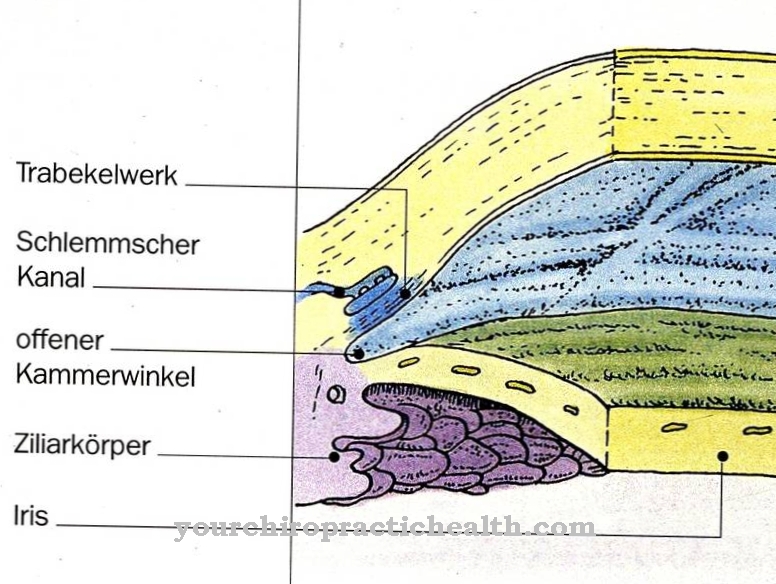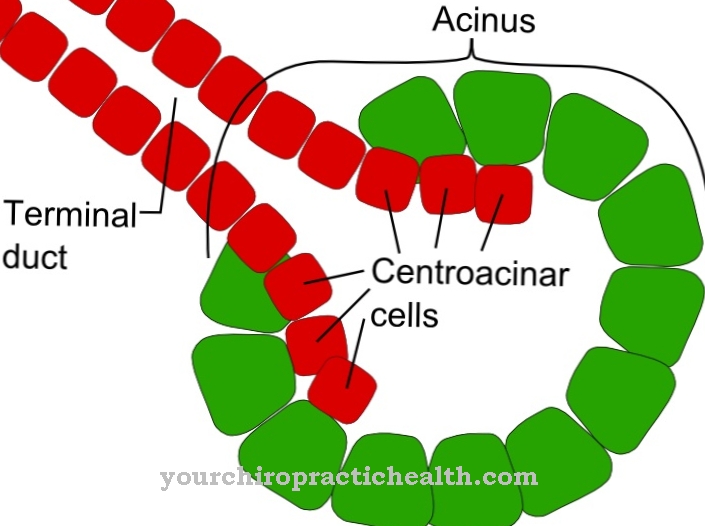The Aortic valve is one of four heart valves or one of two so-called pocket valves. It is located at the exit of the left ventricle into the aorta.
The aortic valve opens during the systolic contraction of the left ventricle, allowing blood to be expelled from the ventricle into the aorta, the beginning of the body's circulation. During the subsequent diastolic relaxation phase of the left ventricle, the aortic valve closes and prevents the blood from flowing back into the ventricle from the aorta.
What is the aortic valve?
The aortic valve is one of two so-called pocket valves of the heart and is located at the exit of the left chamber (ventricle) to the aorta, the body's large main artery. The aortic valve opens during the systolic contraction of the left ventricle, so that blood is pumped from the ventricle into the aorta.
As soon as the blood pressure decreases towards the end of the systole, the blood tends to flow back from the aorta into the left ventricle. A fully functional aortic valve prevents the blood from flowing back because its “pockets” fill with blood and block the way out of the aorta into the left ventricle. Instead, the left ventricle can refill with oxygenated blood from the left atrium.
The aortic valve works purely passively due to the different systolic and diastolic pressure and flow conditions in the heart. The valve does not have any muscles that could actively support opening and closing, as is the case with the two leaflet valves, the mitral valve and the tricuspid valve to a certain extent.
Anatomy & structure
The aortic valve is located in the left ventricle at the origin of the aorta, the large body artery. The heart valve is a so-called pocket valve made up of three crescent-shaped pockets that are formed by the intima, the innermost layer of the blood vessels.
The pockets are attached to a connective tissue-like ring, the anulus fobriosus, and are called the valvula semilunaris dextra, sinistra and septalis. In exceptional cases the aortic valve consists of only two pockets. It is an embryonic malformation or specialty that is already created in the 5th to 7th week of pregnancy. The two-pocket aortic valve can also be fully functional.
At the free end of each pocket there is a small knot-like thickening that is framed by the crescent-shaped valve membrane. This anatomical peculiarity supports the valve function of the valve, which is completely passive because there are no muscle cells or sinews - as with the two leaflet valves - to provide support.
Function & tasks
The main task of the aortic valve is to allow blood to flow from the left ventricle into the aorta, the body's main artery, during the contraction phase of the chambers (systole). This means that the aortic valve opens and offers as little resistance as possible to the flow of blood into the aorta in order to support the heart in its blood output.
An only slight obstruction of the outflow would demand a significantly higher pumping power from the heart, which in the long term could lead to damage to the heart muscle. The next primary function of the aortic valve is to prevent blood from flowing back from the aorta into the left ventricle during the diastolic relaxation phase of the chambers. This means that the moment the blood pressure in the chamber decreases and becomes lower than that in the aorta, the aortic valve closes the aortic entrance and thus prevents the blood from flowing back into the chamber.
This allows oxygen-rich blood to flow from the left atrium into the chamber during diastole - provided that the mitral valve, the valve between the left atrium and the left chamber, opens properly and allows the blood to flow from the left atrium into the left chamber. If the aortic valve shows malfunctions in one of its two tasks of opening and closing the aortic entrance at the right time, the heart muscles must try to compensate for the lower efficiency through increased pumping power, which in the long term can lead to an overload of the heart muscles.
Diseases
In principle, malfunctions of the aortic valve are conceivable both when the aortic entrance is opened and when the entrance is closed at the right time. A narrowing of the aortic valve or an insufficient opening is called aortic stenosis.
If the aortic valve does not close properly and there is partial backflow of blood from the aorta into the left ventricle, valve insufficiency is of a certain magnitude. Valve insufficiency and valve stenosis can occur individually or together as a so-called combined valve vitium. The changes in the aortic valve that lead to the functional impairment are in rare cases due to congenital valve defects, which are not always noticed early because the heart tries to compensate for valve stenosis or valve insufficiency through increased performance.
Malfunctions - especially of the aortic valve - are usually acquired. Typical triggers can include: B. be a rheumatic fever or an infectious endo- or myocarditis. Bacterial infections have also been observed, in the course of which the bacteria settled on the heart valves and led to changes in the valves.
A surviving endocarditis of the aortic valve can lead to scarring of the fine pockets, so that the valve can no longer close completely and a grade I or II insufficiency sets in. Gradually progressive degenerative changes in parts of the aortic valve such as B. calcification, are also acquired heart valve defects.
Typical & common heart diseases
- Heart attack
- Pericarditis
- Heart failure
- Atrial fibrillation
- Myocarditis


























